TEMPLUM DORMIENS DEI
by "Stormwalker"
While Heretic gets considerably less love than Doom or Doom II there exist a number of authors still carrying a torch for its dark fantasy action. Stormwalker, who also goes by Vordakk, is one such individual. While he hadn't done anything Corvus-related since 2011 that year saw two releases, an episode titled Call of the Apostate and a one-off adventure named Dark Deity's Bastion. Templum Dormiens Dei, a single E1M1 replacement for Heretic published in late 2016, is a sequel to the latter. TEMPLMDD requires a source port from the ZDoom family (specifically, version 2.8.1) as it uses a few features including DECORATE monsters and some nominal room-over-room geometry.
BASTION, described as a trap, could have been just about any one of Corvus's stops on the way home from slaying D'Sparil. Templum, however, has the hero return to Parthoris and investigate the identity of the mysterious Dark Deity - now named Scelus - alongside the Sidhe elders. Since I can't think of any reason for the Elfen lad to be wandering through the multiverse I'm inclined to believe that the exit teleporter of APOSTATE sends him to BASTION, tying all three PWADs together. After some deep fact finding he establishes the location of the temple of the sleeping god of wickedness and travels there to put an end to the malign influence lingering over his homeworld.
Which makes me wonder why Scelus bothered to take a swipe at Corvus in the first place. As a god of evil it doesn't necessarily need any motivation but its attack revealed its existence and directly leads to its annihilation. Its nature may make it sympathetic to the whiles of the Serpent Riders, though, which elf boy started to unravel and then seal away with the death of the Apostate in Vordakk's 2011 episode. It's not a stretch for the unholy power to be behind their resurrection, only acting directly after the failure of its puissant puppet. I wouldn't even be surprised if Scelus created the Chaos Sphere, forced into a weakened slumber only to be awakened by its proxies' dying agonies.
I digress. Like BASTION, TEMPLMDD is a large level. Where the former featured as a hub fielding four Horsemen-related challenges, however, Templum is a single contiguous adventure comprised of two main sections. The southeastern section has a pair of large, outside areas but the great outdoors contain maybe 25% of the action or less. Most of it happens in the northern yard / cistern that butts up against the titular temple. I enjoy the, I daresay, "classic" level progression as you poke around the layout entering various side structures until you eventually snag the green key at which point you can start poking around the body of the main structure.
Another thing I like - Vordakk's previous Heretic WADS, particularly Apostate, featured something similar to slaughter-style gameplay. You might get mobbed in Templum but it's the claustrophobic sort of clusterfuck you could expect from dungeon crawling and not dragging hordes of fiends up and down the court. The combat is really good; I can't remember the last time I had so much fun taking on pairs of Iron Liches and other heavies like the final guardian Maultoaur. I know that the monsters aren't any less spongy but Stormwalker has coaxed something out of the feel of fighting the Raven originals that left me so engaged I forgot to save and enjoyed the replay just as much.
TEMPLMDD has an augmented cast of characters featuring four new monsters including the boss. One of these is a gem turret that shoots single Disciple projectiles. It's annoying but fragile and only appears in a select few locations. I don't get a whole lot out of their inclusion but it may be to the player's advantage since you tend to slow down and start thinking tactically once you realize you're dealing with one. The medusae are more numerous and quickly demand your respect. Their "gaze" projectile is strong, fast, and homing, making them a priority target akin to the arch-vile or pain elemental where you could usually just sort of waffle your way through Heretic fights. The last normal monster is some kind of demon wizard with an erratic spread of Hellstaff lightning projectiles that feels like a faster but more predictable Disciple.
Scelus is thankfully not another Heresiarch recolor but derived from Eriance's Hierophant. It's a floating, shackled demon whose body below the chest is either skeleton or just not there. Its fire-based attacks aren't too hard to dodge which makes it dangerous because the real problem is when your eyes glaze over and you get hit by the curse projectile which will bestow upon you some kind of temporary debilitating effect; the worst of them slows you down. That easily breaks you in a game series where your mobility vs. projectiles is paramount. My initial fights with Scelus felt really spongy but the Tome of Power and the Ethereal Crossbow will blow it apart appallingly fast, doing most if not all of the work as long as you can keep the pressure on.
There's one gameplay gimmick I haven't seen before, admittedly only having played a handful of Heretic levels myself. Both the Phoenix Rod and the switch opening the passageway to the blue key are guarded by a series of crushers whose tracks are littered with regenerating spores of the explosive variety. The first time is an enormous pain in the ass because the hallway is narrow and there's a pretty good chance that a pod is going to spawn in as you try to dart through one of the bands. If you get caught up, you're probably going to die from the explosion if not the squeeze. The second instance offers a lot more room but you still have to be wary of orbs, particularly anything spawning on the edge of a crusher.
While playing I felt largely oblivious to the map's eight secrets. The barred door by the yellow key was driving me nuts; what would I have to do to get inside? Spoiler alert: all of the barred doors open at the end of the level. One of these leads to the final boss and another is a maulotaur fight with just enough room to be interesting and not frustrating. The other two reward you if you can remember where they are, supplying an Enchanted Shield and a Tome of Power in preparation for your showdown against the big bad. It's a nice bonus for players who don't mind a little backtracking.
Vordakk's concentration on more intimate combat scenarios, traps, and tighter interior level design gives Templum an atmosphere not unlike a moody action role-playing game beginning. Its considerable overworld dominates the southeastern portion of the map, the player weaving back and forth between it and dark dungeon crawler. His effort is bolstered by the inclusion of some Kevin Schilder tracks from Hexen II, most notably "The Pyramid of Anubs" which is used as the soundtrack for the majority of the level, switching to "Eidolon's Ordeal" for the final battle. The other pieces are "Doomed Traveler's Song" (title theme) and "Castle of Barbican" (ending). The .MP3s add a fresh but familiar veneer to the action since Schilder scored both Raven games and they're not MIDIs.
If you like Heretic then you have got to give Templum a try. It's a great adventure with a few new twists and there are so few user levels for the game as it is. Maybe Vordakk and his soul brother DeathevokatioN will finish The Ending Quest before too much longer to give us even more pixie power. Until then we'll just have to make do with what meager scraps its fans manage to cobble together in between making Doom maps.

DONA EIS REQUIEM
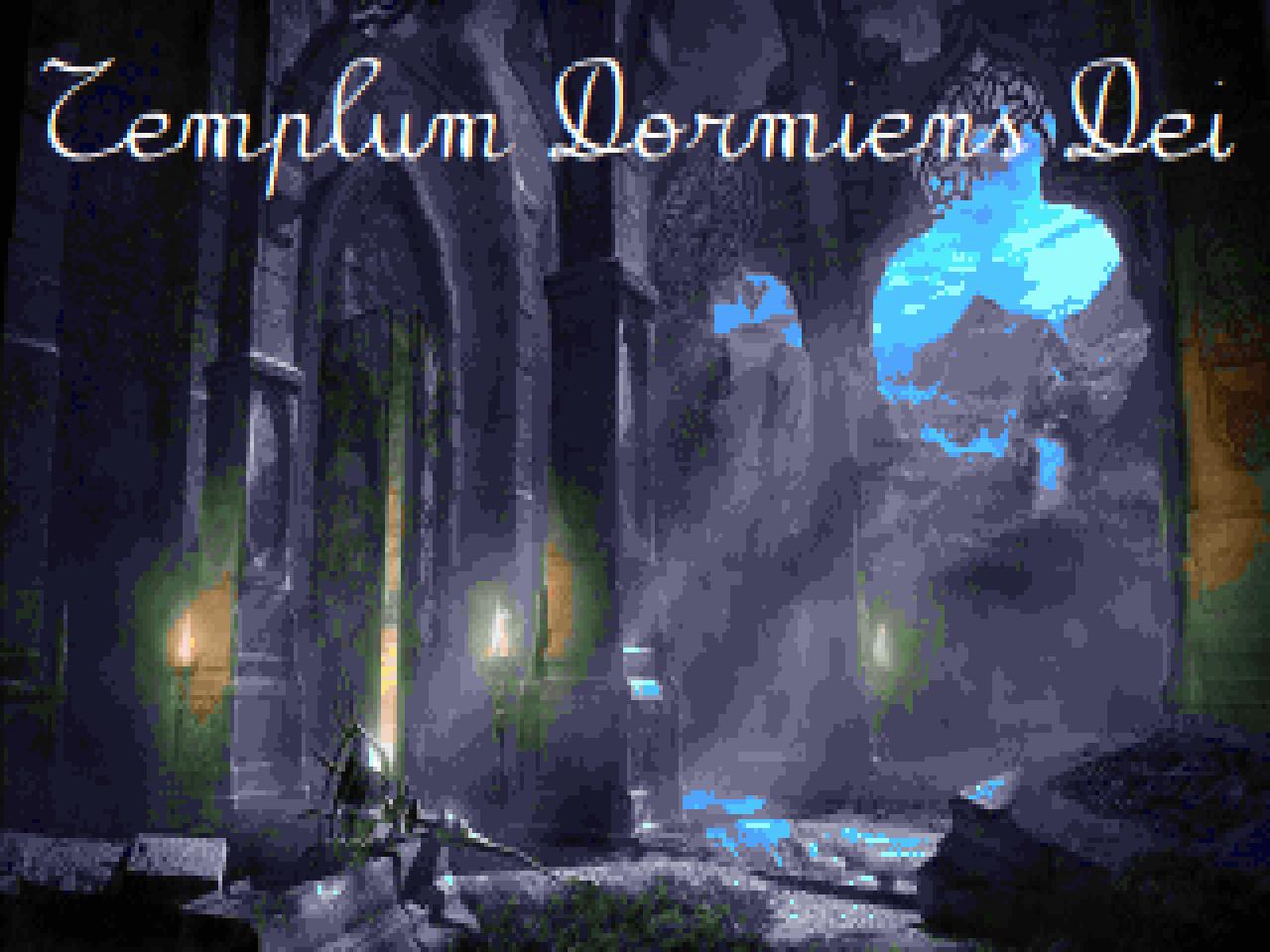
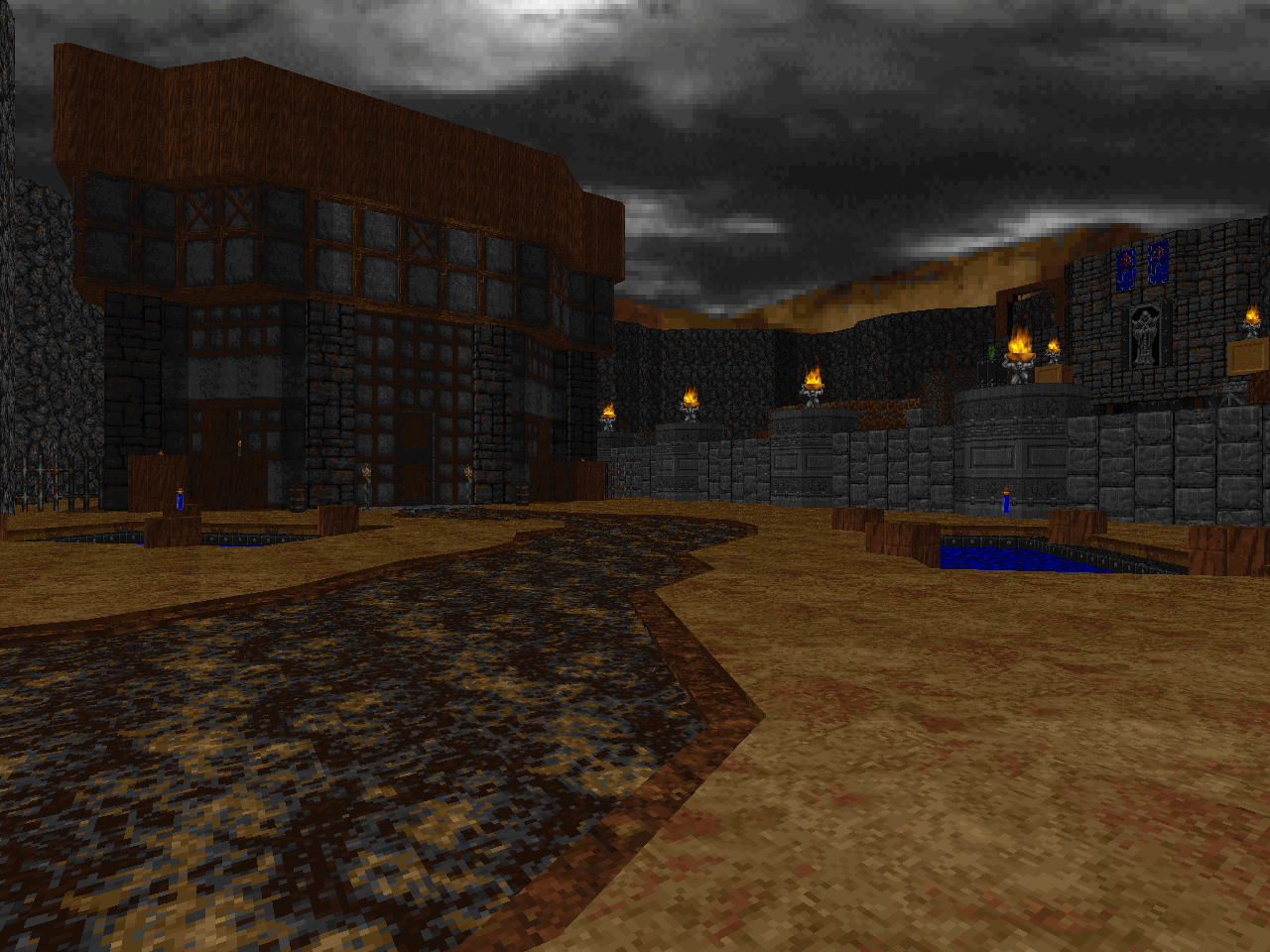
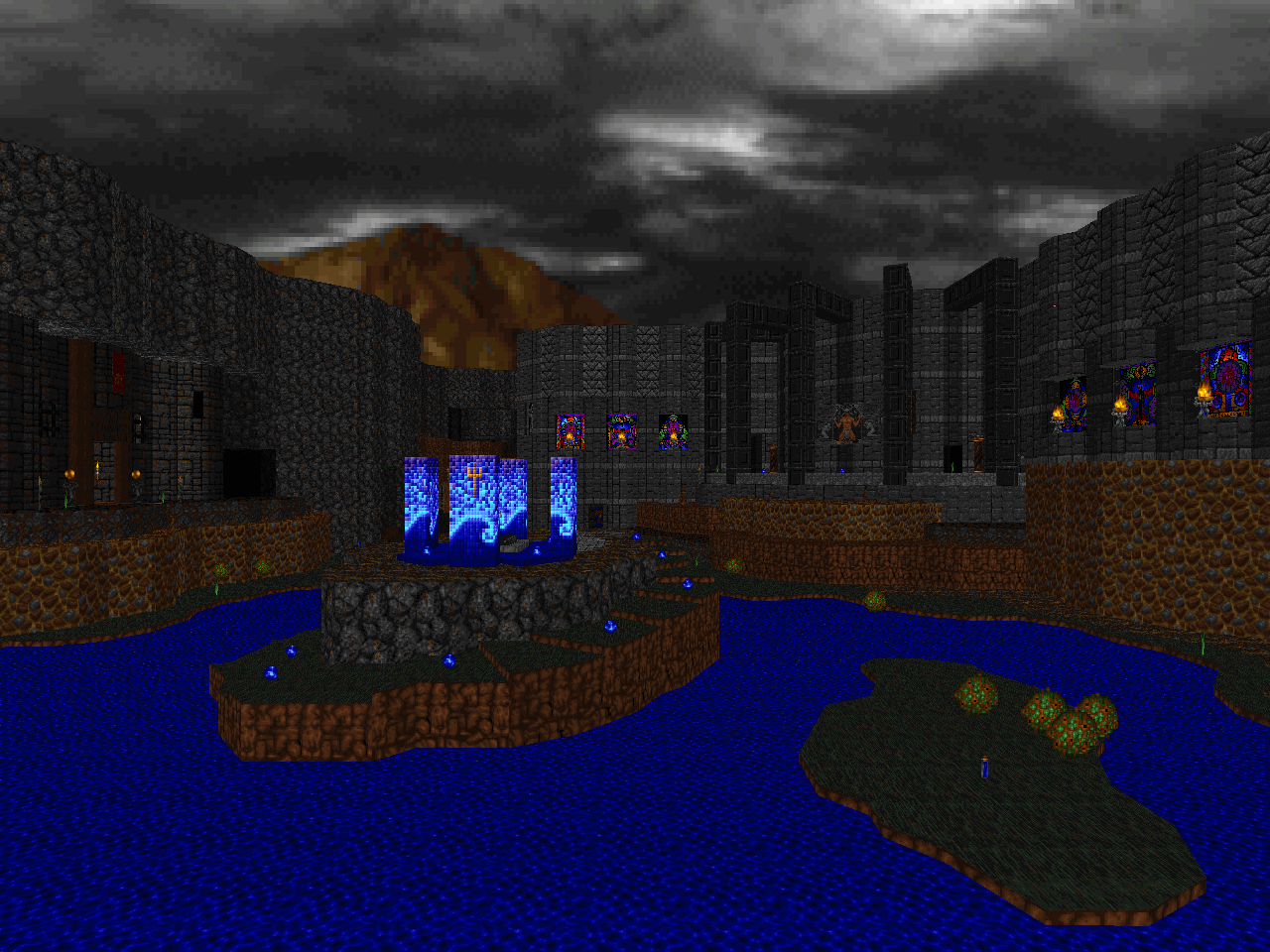
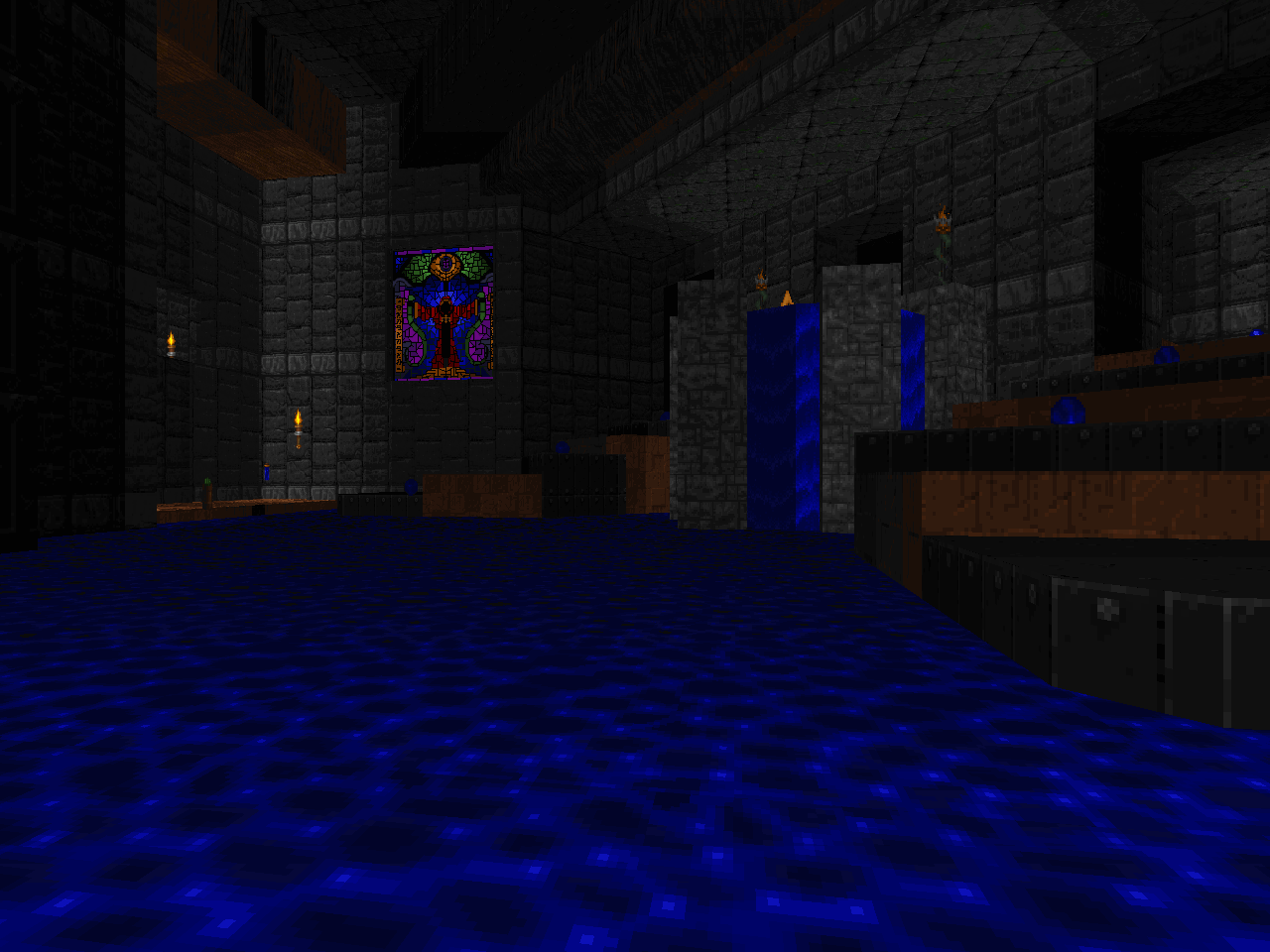
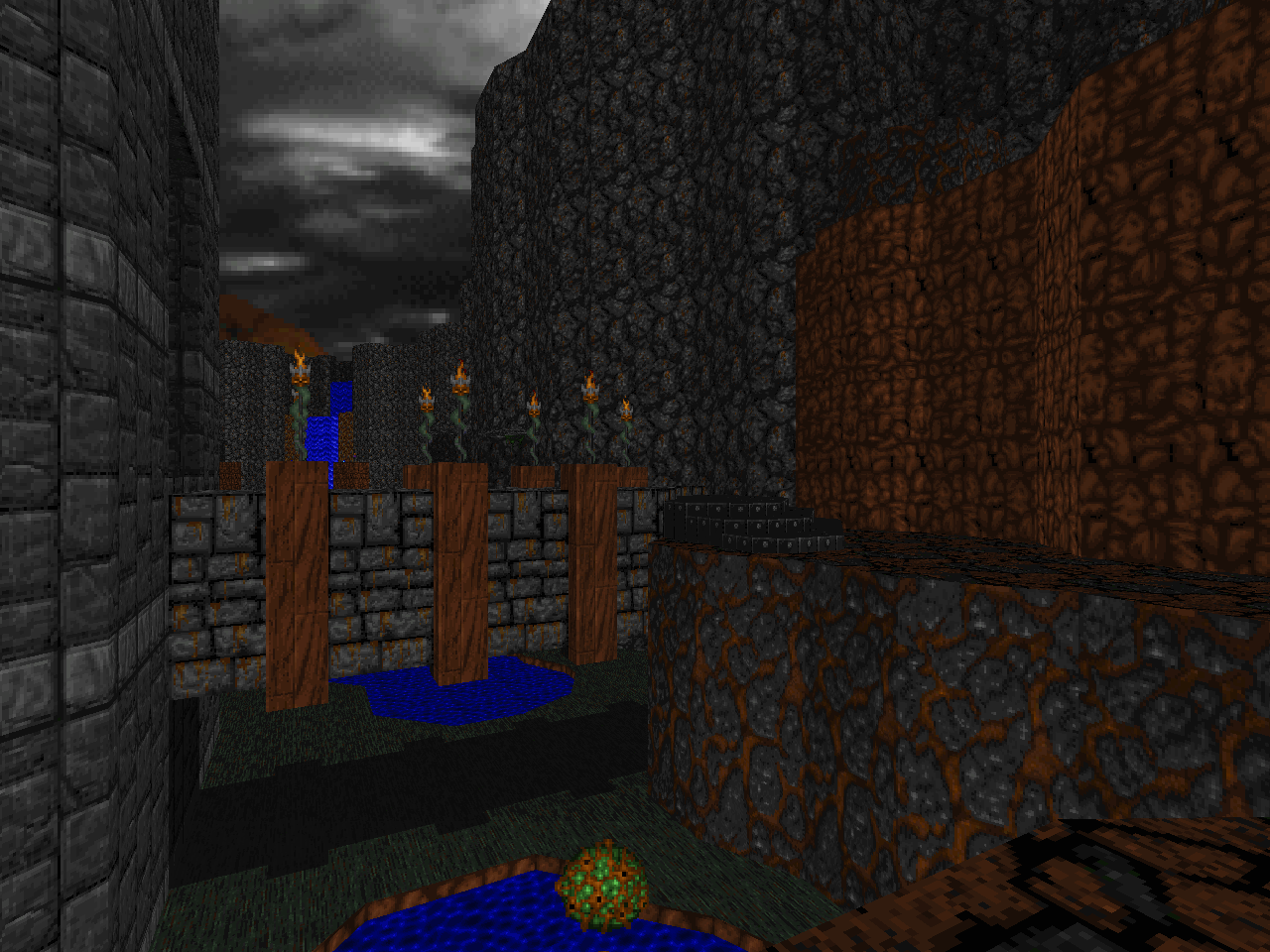
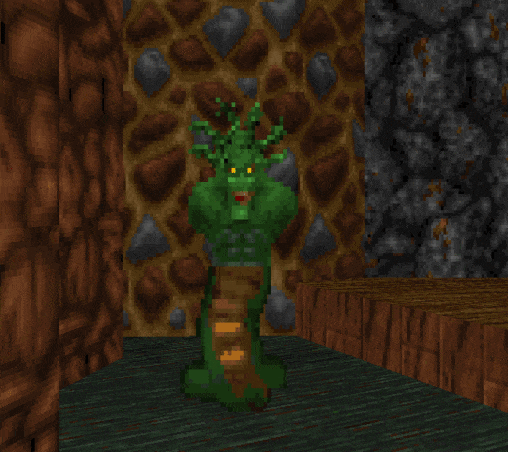
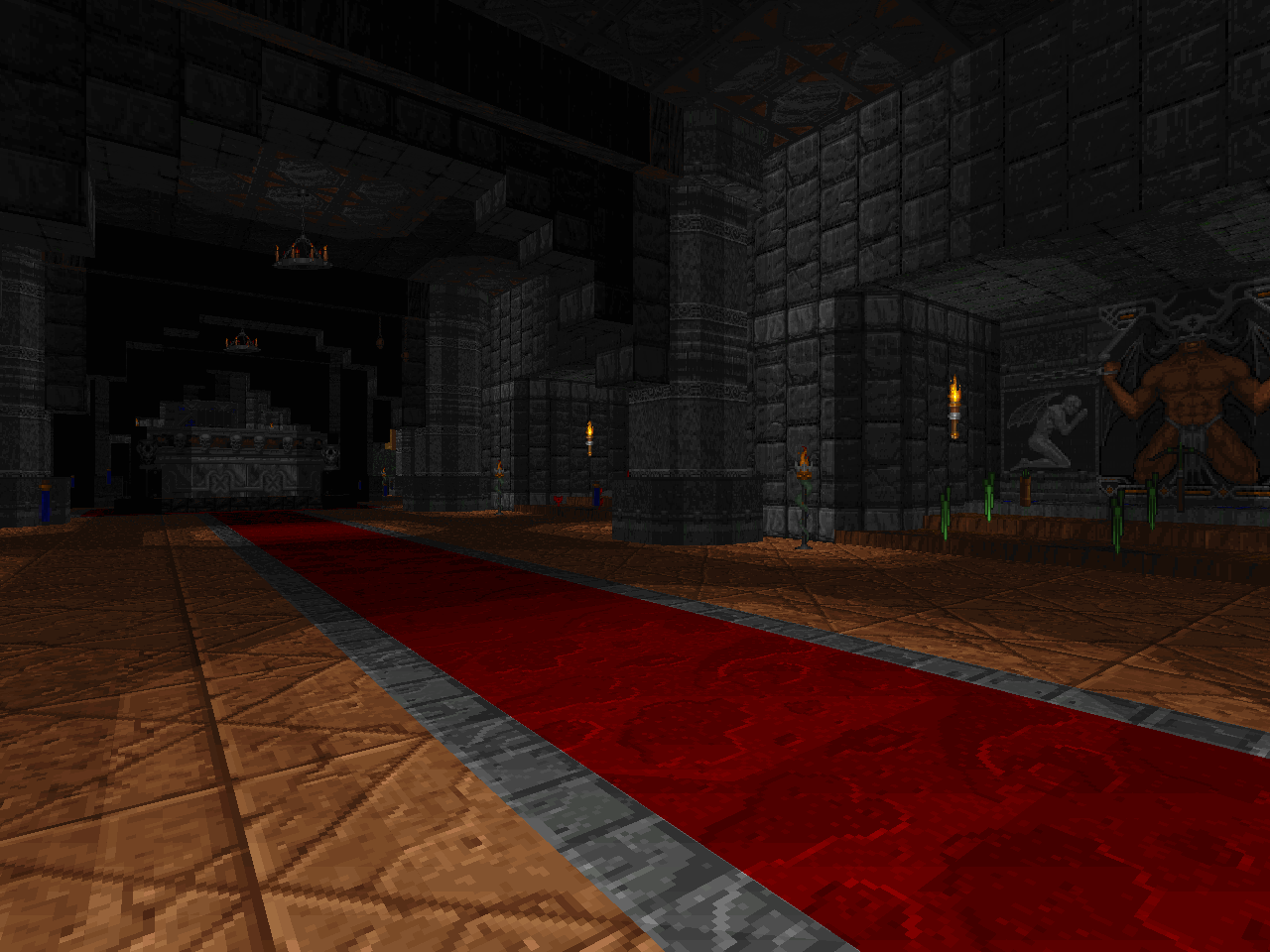
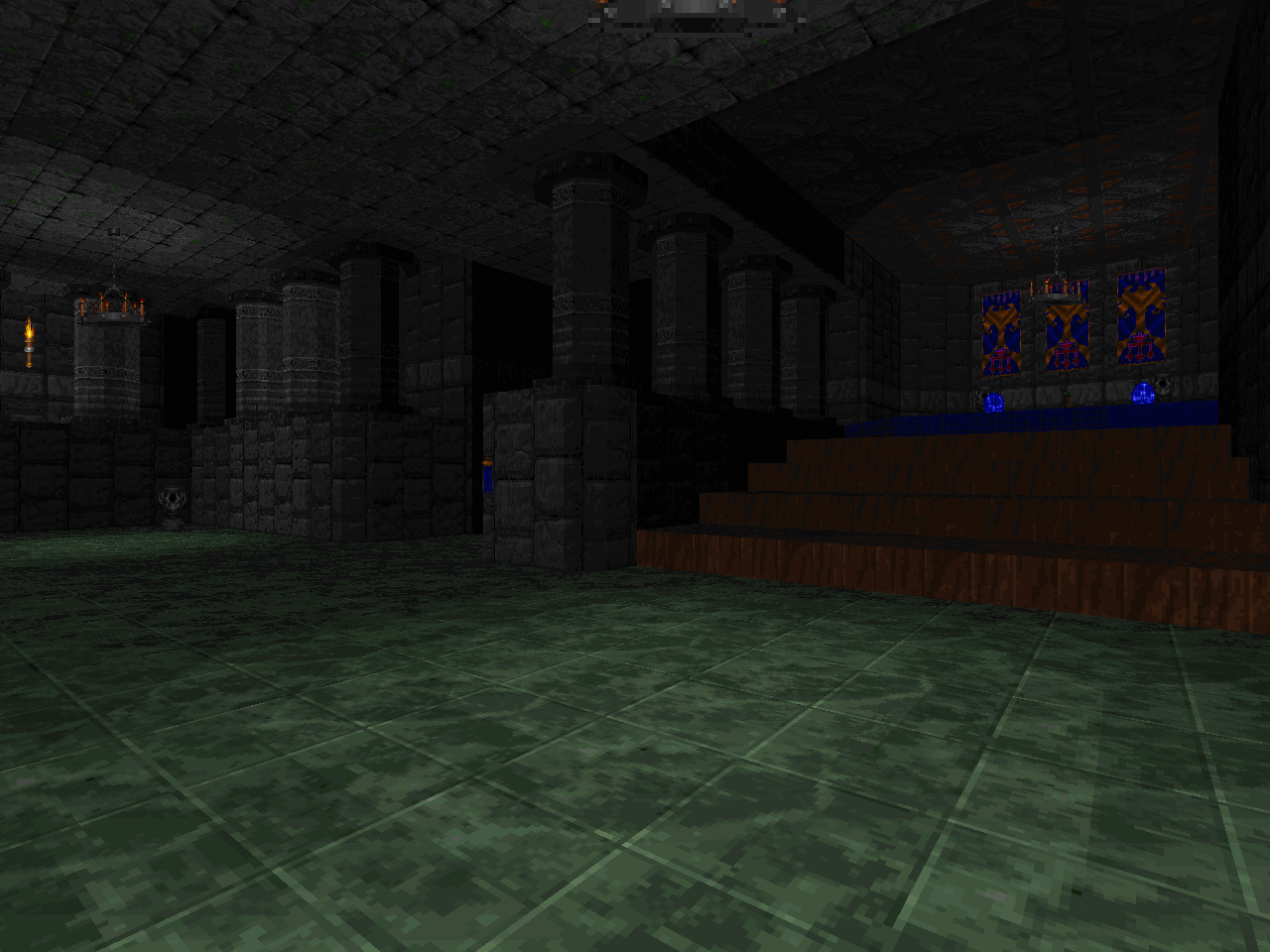
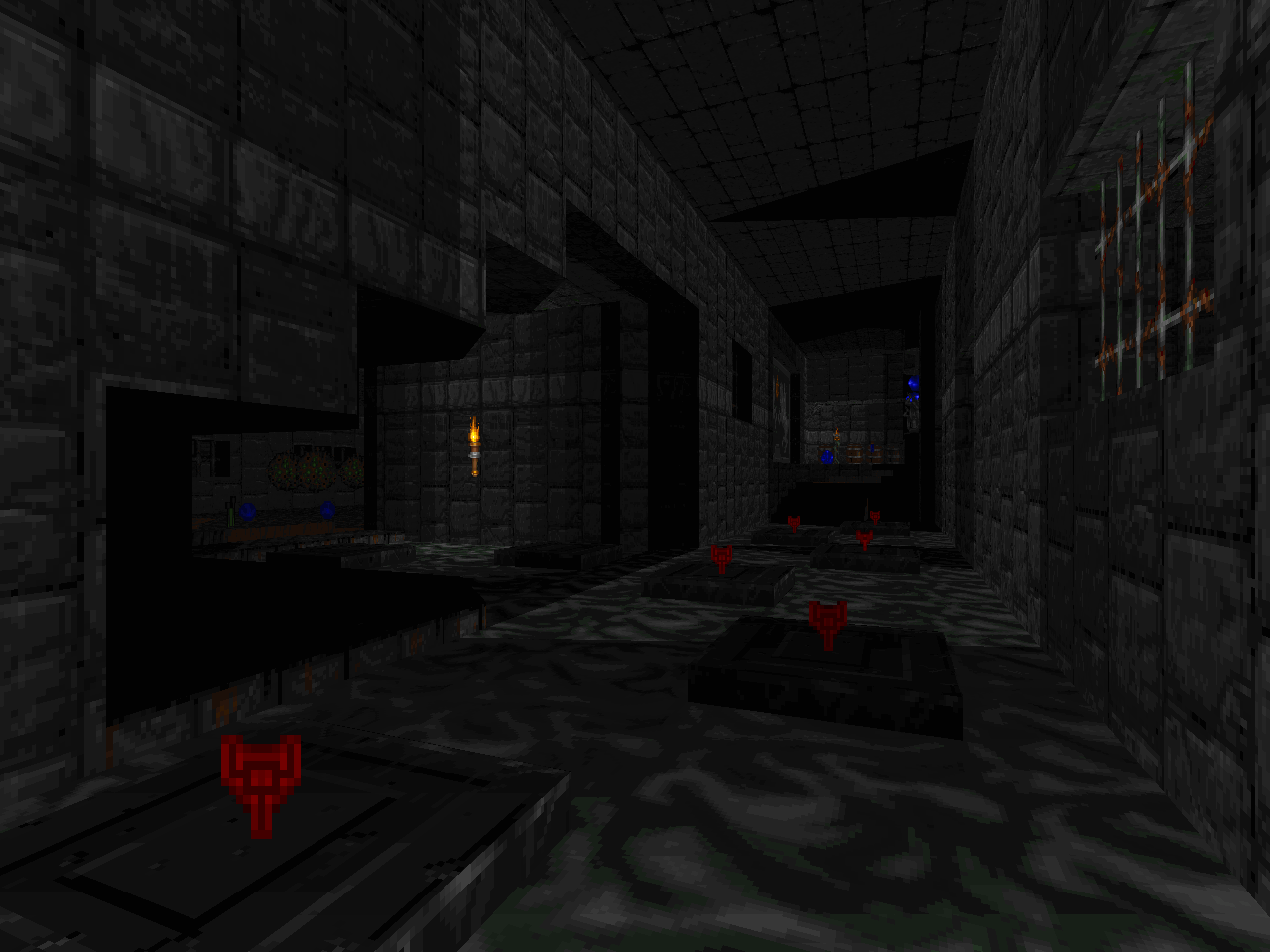
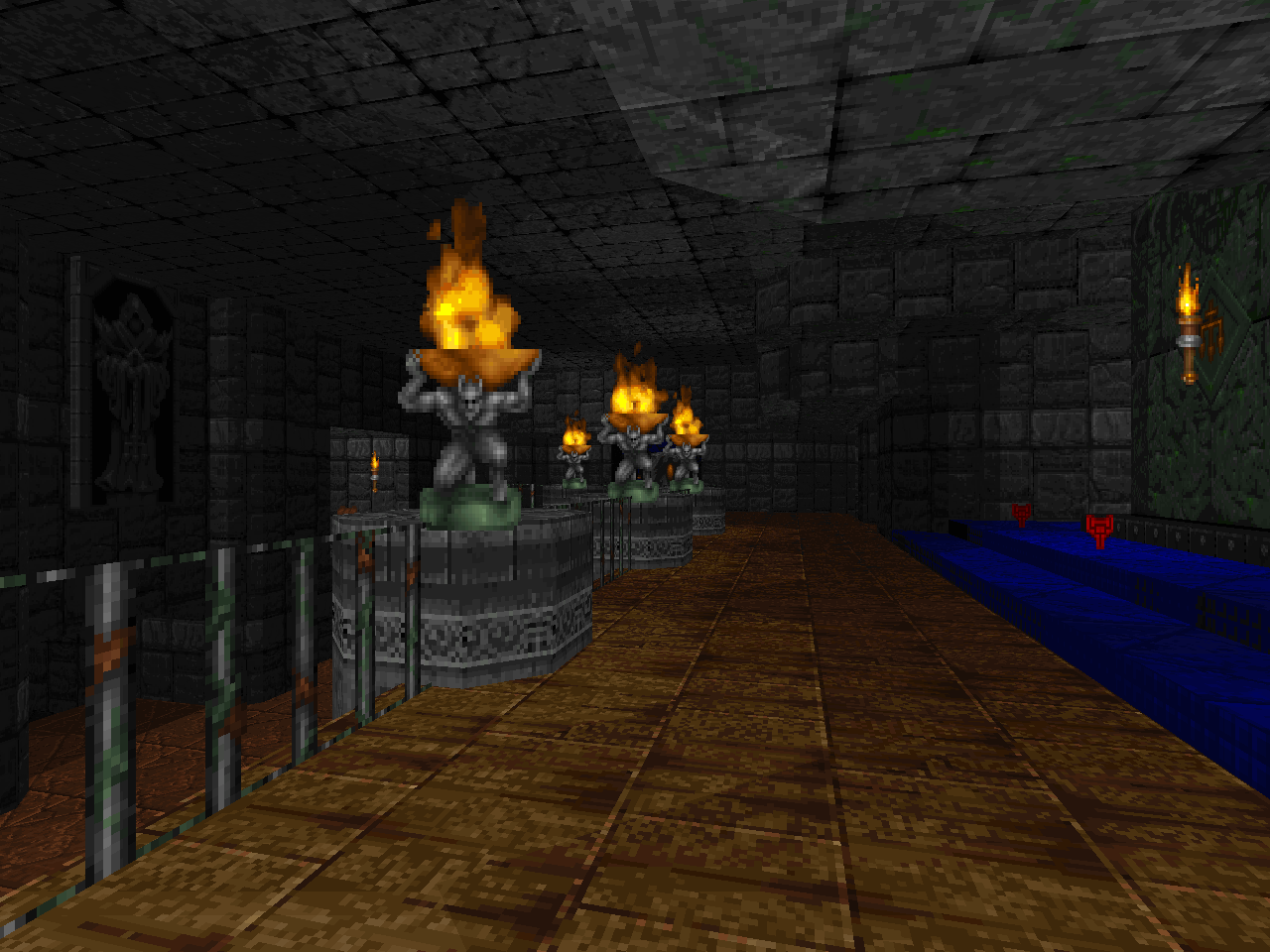

Thanks for the review, KMX E XII! I'm truly flattered by it!
ReplyDeleteYou are most welcome!
DeleteStormwalker is always a greatly under-recognized designer IMO of some very good stuff.
ReplyDelete